Blog - Foot Doctor, Chambersburg and McConnellsburg, PA
Blake Swihart Sprains Ankle
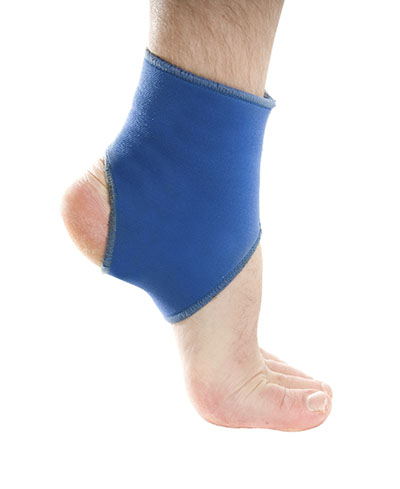 After colliding against the side wall in left field, Red Sox outfielder Blake Swihart suffered a left ankle sprain. The injury could cause him to miss the next several weeks of gameplay, and the Red Sox have limited replacement options for the left fielder. The timetable for his return is sometime in mid-July, and Rusney Castillo is expected to be his replacement until he rejoins the team.
After colliding against the side wall in left field, Red Sox outfielder Blake Swihart suffered a left ankle sprain. The injury could cause him to miss the next several weeks of gameplay, and the Red Sox have limited replacement options for the left fielder. The timetable for his return is sometime in mid-July, and Rusney Castillo is expected to be his replacement until he rejoins the team.
Ankle sprains are common, but need immediate attention. If you have any concerns about your feet or ankles, contact Dr. Steven Schwartz from Pennsylvania. Our doctor will assist you with all of your foot and ankle needs.
How Does an Ankle Sprain Occur?
Ankle sprains take place when the ligaments in your ankle are torn or stretched beyond their limits. There are multiple ways that the ankle can become injured, including twisting or rolling over onto your ankle, putting undue stress on it, or causing trauma to the ankle itself.
What are the Symptoms?
- Mild to moderate bruising
- Limited mobility
- Swelling
- Discoloration of the skin (depending on severity)
Preventing a Sprain
- Wearing appropriate shoes for the occasion
- Stretching before exercises and sports
- Knowing your limits can aid in prevention
Treatment of a Sprain
Treatment of a sprain depends on the severity. Many times, people are told to rest and remain off their feet completely, while others are given an air cast. If the sprain is very severe, surgery may be required.
If you have suffered an ankle sprain previously, you may want to consider additional support such as a brace and regular exercises to strengthen the ankle.
If you have any questions, please feel free to contact our office located in Chambersburg and Mcconnellsburg, PA. We offer the newest diagnostic and treatment technologies for all your foot care needs.
Read more about ankle sprains.
Why You Should Take Care of Your Feet
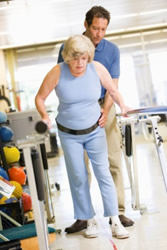 89-year-old Alan Church was found in Woodbury Care home in an appalling condition. Maggots were discovered inside his foot, and many of the creatures were breeding under his skin. The ongoing investigation by Thames Valley Police is looking into the possibility that Church was not the only patient being neglected by the home. Unfortunately, Church passed away in August of 2015, but the fight for justice by his relatives is far from finished. They believe his quality of life would have been much better if the staff at Woodbury Care did not neglect him.
89-year-old Alan Church was found in Woodbury Care home in an appalling condition. Maggots were discovered inside his foot, and many of the creatures were breeding under his skin. The ongoing investigation by Thames Valley Police is looking into the possibility that Church was not the only patient being neglected by the home. Unfortunately, Church passed away in August of 2015, but the fight for justice by his relatives is far from finished. They believe his quality of life would have been much better if the staff at Woodbury Care did not neglect him.
Proper foot care is something many older adults forget to consider. If you have any concerns about your feet and ankles contact Dr. Steven Schwartz from Pennsylvania. Our doctor can provide the care you need to keep your pain free and on your feet.
The Elderly and their Feet
As we age we start to notice many changes in our body, but the elder population may not notice them right away. Medical conditions may prevent the elderly to take notice of their foot health right away. Poor vision is a lead contributor to not taking action for the elderly.
Common Conditions
Neuropathy – can reduce feeling in the feet, and can hide many life threating medical conditions.
Reduced flexibility – prevents the ability of proper toenail trimming, and foot cleaning. If left untreated, it may lead to further medical issues.
Foot sores – amongst the older population can be serious before they are discovered. Some of the problematic conditions they may face are:
Gouging toenails affecting nearby toe
Shoes that don’t fit properly
Pressure sores
Loss of circulation in legs & feet
Edema & swelling of feet and ankles
Susceptible Infections
Diabetes and poor circulation can cause general loss of sensitivity over the years, turning a simple cut into a serious issue.
If you have any questions please feel free to contact our office located in Chambersburg and Mcconnellsburg, PA. We offer the newest diagnostic and treatment technologies for all your foot and ankle needs.
Jimmy Ryan unperturbed by Broken Toe
 Fleetwood’s Jimmy Ryan was reportedly been playing with a broken toe during the months of April and May, according to Fleetwood manager Steven Pressley. Ryan had missed practice and had not trained for up to 3 weeks, but had also not missed any games. “Jimmy has shown a great mentality. He has continued to get injections prior to games to get himself out there,” said Pressley.
Fleetwood’s Jimmy Ryan was reportedly been playing with a broken toe during the months of April and May, according to Fleetwood manager Steven Pressley. Ryan had missed practice and had not trained for up to 3 weeks, but had also not missed any games. “Jimmy has shown a great mentality. He has continued to get injections prior to games to get himself out there,” said Pressley.
A broken toe can be very painful and lead to complications if not properly fixed. If you have any concerns about your feet, contact Dr. Steven Schwartz from Pennsylvania. Our doctor will treat your foot and ankle needs.
What to Know About a Broken Toe
Although most people try to avoid foot trauma such as banging, stubbing, or dropping heavy objects on their feet, the unfortunate fact is that it is a common occurrence. Given the fact that toes are positioned in front of the feet, they typically sustain the brunt of such trauma. When trauma occurs to a toe, the result can be a painful break (fracture).
Symptoms of a Broken Toe
- throbbing pain
- swelling
- bruising on the skin and toenail
- the inability to move the toe
- toe appears crooked or disfigured
- tingling or numbness in the toe
Generally, it is best to stay off of the injured toe with the affected foot elevated.
Severe toe fractures may be treated with a splint, cast, and in some cases, minor surgery. Due to its position and the pressure it endures with daily activity, future complications can occur if the big toe is not properly treated.
If you have any questions, please feel free to contact our offices located in Chambersburg and Mcconnellsburg, PA. We offer the newest diagnostic and treatment technologies for all your foot care needs.
Tips for Choosing the Right Footwear for your Feet
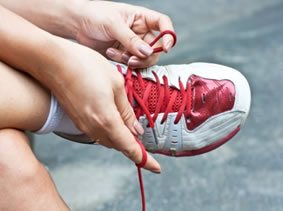 When buying footwear, make sure to follow these tips. Opt for buying footwear later in the day, as your feet tend to swell as the day goes by. Don’t stick to any particular shoe size and take into consideration your feet’s length, breadth, and height. Know what type of foot gait you have and if you require arch support in your footwear. Try on shoes while in the store, and make sure your shoes have room for your toes to wiggle.
When buying footwear, make sure to follow these tips. Opt for buying footwear later in the day, as your feet tend to swell as the day goes by. Don’t stick to any particular shoe size and take into consideration your feet’s length, breadth, and height. Know what type of foot gait you have and if you require arch support in your footwear. Try on shoes while in the store, and make sure your shoes have room for your toes to wiggle.
Finding a properly-fitting shoe is important in reducing injuries and preventing foot problems. For more information about treatment, contact Dr. Steven Schwartz from Pennsylvania. Our doctor will treat your foot and ankle needs.
Proper Shoe Fitting
A common concern when it comes to foot health, having properly fitted shoes can help prevent injuries to the foot. Out feet affect our posture and gait, which in turn affects the biomechanics and overall bodily structure. With 33 joints, 26 bones, and over 100 ligaments, the potential for serious injury is much greater than one realizes. Although the feet cease growth in adulthood, they still change shape as they mature. Here are some factors to consider when it comes to investing in proper fitting shoes:
- Be sure the shoes fit correctly right away
- Ensure the ball of your foot fits comfortably in the widest portion of the shoes
- Even though they may look fashionable, improper fitting shoes can either create adverse conditions or exacerbate existing ones you may already have
- Walk along a carpeted surface to ensure the shoes comfortably fit during normal activity
Keeping in mind how shoes fit the biomechanics of your body, properly-fitting shoes are vitally important. Fortunately, it is not difficult to acquire footwear that fits correctly. Be sure to wear shoes that support the overall structure of your body. Do your feet a favor and invest in several pairs of well-fitted shoes today.
If you have any questions, please feel free to contact our offices located in Chambersburg and Mcconnellsburg, PA. We offer the newest diagnostic and treatment technologies for all your foot care needs.
Various Complications Arise from High Heel Wear
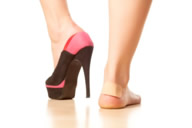 A beauty trend that can lead to chronic health problems with time is high heels. Although high heels are a common choice of footwear for women, high heels shift the balance and structure of our bodies. High heels exert uneven pressure onto our heels and feet, increasing the risk of leg and foot injuries. Avoid wearing high heels for long periods of time and see your podiatrist if you are experiencing chronic foot pain.
A beauty trend that can lead to chronic health problems with time is high heels. Although high heels are a common choice of footwear for women, high heels shift the balance and structure of our bodies. High heels exert uneven pressure onto our heels and feet, increasing the risk of leg and foot injuries. Avoid wearing high heels for long periods of time and see your podiatrist if you are experiencing chronic foot pain.
High heels have a history for causing foot and ankle problems. If you have any concerns about your feet contact Dr. Steven Schwartz from Pennsylvania. Our doctor will treat your foot and ankle needs.
Effects of High Heels on the Feet
High heels are popular shoes among women because their style and societal appeal. Despite this, they can still cause many health problems if worn too frequently.
What parts my body will be affected by high heels?
- Ankle Joints
- Achilles Tendon – may shorten and stiffen with prolonged wear
- Balls of the Feet
- Knees – heels cause the knees to bend constantly, creating stress on them
- Back – they decrease the spine’s ability to absorb shock, which may lead to back pain. Also, the vertebrae of the lower back may compress.
What kinds of foot problems can develop from wearing high heels?
- Corns
- Calluses
- Hammertoe
- Bunions
- Morton’s Neuroma
- Plantar Fasciitis
How can I still wear high heels and maintain foot health?
If you want to wear high heeled shoes, make sure that you are not wearing them every day, as this will help prevent long term physical problems. Try wearing thicker heels as opposed to stilettos to distribute weight more evenly across the feet. Always make sure you are wearing the proper shoes for the right occasion, such as sneakers for exercising. If you walk to work, try carrying your heels with you and changing into them once you arrive at work. Adding inserts to your heels can help cushion your feet and absorb shock. Full foot inserts or metatarsal pads are available.
If you have any questions, please feel free to contact our offices located in Chambersburg and Mcconnellsburg, PA. We offer the newest diagnostic and treatment technologies for all your foot care needs.
Understanding Hallux Rigidus and Hallux Limitus
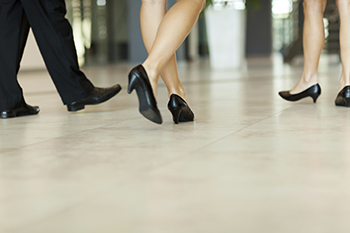 Also known as the hallux, our big toes are important in ensuring proper foot function and gait, preventing risk of injury and prolonging the onset of foot conditions such as arthritis. Hallux rigidus, or when the big toe becomes limited in movement, is different from hallux rigidus, when the big toe becomes disabled from mobility. It’s essential to address your condition immediately and see your doctor if you believe you may have hallux limitus or hallux rigidus.
Also known as the hallux, our big toes are important in ensuring proper foot function and gait, preventing risk of injury and prolonging the onset of foot conditions such as arthritis. Hallux rigidus, or when the big toe becomes limited in movement, is different from hallux rigidus, when the big toe becomes disabled from mobility. It’s essential to address your condition immediately and see your doctor if you believe you may have hallux limitus or hallux rigidus.
Hallux limitus is a very uncomfortable condition to live with. If you have any concerns about hallux limitus, contact Dr. Steven Schwartz from Pennsylvania. Our doctor will treat your foot and ankle needs.
What You Need To Know About Hallux Limitus
Hallux limitus is a medical condition which stands for “stiff toe.” This is an arthritic condition in which movement of the big toe is constrained. The pain is usually allocated between the large toe and foot. This condition is not of serious matter, but should be treated to avoid a hallux rigdus.
Symptoms
Toe pain is common, therefore many people tend to overlook this issue and believe it’s nothing serious. But, if you notice sharp pain, bone growths, tightness around the joint and even changes in the way you walk. It is vital to see a podiatrist before your condition worsens.
How Do I Get It?
Genetics – hallux limitus can be inherited from your parents, or someone can be who is born with a predisposition to arthritis as well.
Injury – overuse can cause trauma to the joints leading to extra bone growth and wear away the cartilage.
Treatment
X-rays are the most common used methods for diagnosis; it is also performed with a test to see the general function of the big toe.
Lifestyle & Physical Therapy – having motion and massages to the given area will help slow down complications and gradually increase flexibility.
R.I.C.E. – stands for rest, ice, compression and elevation. Combining the R.I.C.E method with other treatments is proven effective.
It is important that when one suffers any kind of foot injury, one should not over exert the toe with strenuous physical activity. Too much activity can destroy the cartilage, making the toe even stiffer.
If you have any questions, please feel free to contact our offices located in Chambersburg and Mcconnellsburg, PA. We offer the newest diagnostic and treatment technologies for all your foot care needs.
Managing Your Bunion Condition
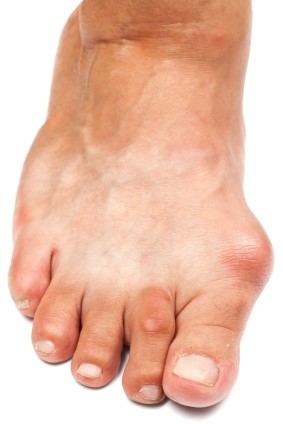 Bunions are characterized as enlargements of the big toe joints, which cause the big toe joint to bend toward the smaller toes. Bunions are progressing conditions that can be caused by muscle imbalance, abnormal gait, inherited genes, and ill-fitting shoes. All of these factors lead to uneven pressure being exerted on our feet, resulting in instability and deformity. Treatment options for bunions include finding proper footwear, therapy, custom orthotics, padding, taping and bracing, and surgery to control the progression of the condition.
Bunions are characterized as enlargements of the big toe joints, which cause the big toe joint to bend toward the smaller toes. Bunions are progressing conditions that can be caused by muscle imbalance, abnormal gait, inherited genes, and ill-fitting shoes. All of these factors lead to uneven pressure being exerted on our feet, resulting in instability and deformity. Treatment options for bunions include finding proper footwear, therapy, custom orthotics, padding, taping and bracing, and surgery to control the progression of the condition.
Bunion surgery usually occurs after non-surgical methods have proved to be ineffective. If you have any concerns,contact Dr. Steven Schwartz from Pennsylvania. Our doctor will treat your foot and ankle needs.
What is a Bunion?
A bunion is formed of swollen tissue or an enlargement of boney growth, usually located at the base joint of the toe that connects to the foot. The swelling occurs by the bones in the big toe shifting inward, which impacts the other toes of the foot. This causes the area around the base of the big toe to become inflamed and painful.
Why do Bunions Form?
- Genetics – susceptibility to bunions are often hereditary
- Stress on the feet – poorly fitted and uncomfortable footwear that places stress on feet, such as heels, can cause bunions to form
How are Bunions Diagnosed?
Doctors often perform two tests – blood tests and x-rays – when trying to diagnose bunions, especially in the early stages of development. Blood tests help determine if the foot pain is being caused by something else, such as arthritis, while x-rays provide a clear picture of your bone structure to your doctor.
How are Bunions Treated?
- Refrain from wearing heels or similar shoes that cause discomfort
- Select wider shoes that can provide more comfort and reduce pain
- Anti-inflammatory and pain management drugs
- Orthotics or foot inserts
- Surgery
If you have any questions, please feel free to contact our offices located in Chambersburg and Mcconnellsburg, PA. We offer the newest diagnostic and treatment technologies for all your foot care needs.
Prepare your Feet before Barefoot Running to Reduce Risk of Injury
 Although research on the benefits of barefoot running or running with minimalist shoes is currently limited, it’s important to properly transition your feet if you plan on trying barefoot running. As barefoot running alters your feet’s form, preparing your feet is the best way to avoid risk of injury. Train and stretch your feet by walking barefoot from time to time as well as ease them gradually over a period of months into minimalist shoes.
Although research on the benefits of barefoot running or running with minimalist shoes is currently limited, it’s important to properly transition your feet if you plan on trying barefoot running. As barefoot running alters your feet’s form, preparing your feet is the best way to avoid risk of injury. Train and stretch your feet by walking barefoot from time to time as well as ease them gradually over a period of months into minimalist shoes.
Barefoot running has its own share of benefits and disadvantages. If you have any concerns about your feet or ankles, contact Dr. Steven Schwartz from Pennsylvania. Our doctor will treat your foot and ankle needs.
Barefoot Running
The Impact of Barefoot Running
-Running without shoes changes the motion of your running, as most running is done by landing on the heel of the feet.
-Running barefoot requires a different way of running; the landing is done on the front part of the feet.
The Advantages of Barefoot Running
-When running and landing on the front feet, the impact on the feet and ankle is reduced, this can reduce stress injuries.
-It strengthens muscles in the feet and ankles and the lower legs.
-Balance of the body is improved and there is a greater sensory input from the feet to the rest of the body.
The Drawbacks of Barefoot Running
-No protection while running, makes it likely that runners will land on sharp objects and scrapes, bruises and cuts on the feet will result.
-Blisters may form.
-Possibility of plantar fascia problems.
-Risk of getting Achilles tendonitis.
So what can runners do to make barefoot running safe? It’s best to make a slow transition from running shoes to barefoot running. Once the feet begin to adjust, try walking, then jogging and gradually increasing the distance. Minimalist running shoes may also be an option.
If you have any questions, please feel free to contact our offices located in Chambersburg and Mcconnellsburg, PA. We offer the newest diagnostic and treatment technologies for all your foot care needs.
10% of People are affected by Plantar Fasciitis at Least Once During their Lives
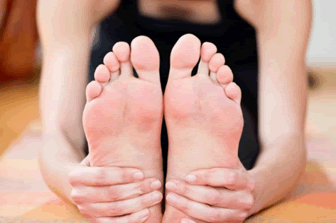 Plantar fasciitis is a foot condition caused by the irritation of the plantar fascia, which leads to pain in the heels of the foot. The condition is “the most common cause of heel pain and approximately 10% of people will be affected by plantar fasciitis at some point in their life,” which also affects women and older individuals. Plantar fasciitis can be caused by standing for too long, strenuous sports, improper footwear, or the soles of the feet being overstretched. Treating plantar fasciitis involves allowing the feet to recover and engaging in regular physical therapy.
Plantar fasciitis is a foot condition caused by the irritation of the plantar fascia, which leads to pain in the heels of the foot. The condition is “the most common cause of heel pain and approximately 10% of people will be affected by plantar fasciitis at some point in their life,” which also affects women and older individuals. Plantar fasciitis can be caused by standing for too long, strenuous sports, improper footwear, or the soles of the feet being overstretched. Treating plantar fasciitis involves allowing the feet to recover and engaging in regular physical therapy.
Plantar fasciitis can be very painful and inconvenient. If you are experiencing heel pain or symptoms of plantar fasciitis, see Dr. Steven Schwartz from Pennsylvania. Our doctor will treat your feet in addition to other podiatric-related needs.
What is Plantar Fasciitis?
Plantar fasciitis is the inflammation of the thick band of tissue that runs along the bottom of your foot, known as the plantar fascia, and causes mild to severe heel pain.
What Causes Plantar Fasciitis?
· Excessive running
· Non-supportive shoes
· Overpronation
· Repeated stretching and tearing of the plantar fascia
How Can It Be Treated?
· Conservative measures – anti-inflammatories, ice packs, stretching exercises, physical therapy, orthotic devices
· Shockwave therapy – sound waves are sent to the affected area to facilitate healing and are usually used for chronic cases of plantar fasciitis
· Surgery – usually only used as a last resort when all else fails. The plantar fascia can be surgically detached from the heel
While very treatable, plantar fasciitis is definitely not something that should be ignored. Especially in severe cases, speaking to your doctor right away is highly recommended to avoid complications and severe heel pain. Your podiatrist can work with you to provide the appropriate treatment options tailored to your condition.
If you have any questions, please feel free to contact our offices located in Chambersburg and Mcconnellsburg, PA. We offer the newest diagnostic and treatment technologies for all your foot care needs.
Find the Right Shoes to Avoid the Risk of Running Injuries
 According to Paul Williams, owner of Peninsula Runners, those who plan on running should opt for shoes with cushioning. “I think when you have more protection you can run harder and faster, reducing injuries such as shin splints, Achilles tendinitis and knee pain,” he says. It’s important to have properly fitting shoes to treat foot conditions like plantar fasciitis. There are also shoe accessories such as speed laces, compression socks, and foam rollers, all of which can help improve running activity.
According to Paul Williams, owner of Peninsula Runners, those who plan on running should opt for shoes with cushioning. “I think when you have more protection you can run harder and faster, reducing injuries such as shin splints, Achilles tendinitis and knee pain,” he says. It’s important to have properly fitting shoes to treat foot conditions like plantar fasciitis. There are also shoe accessories such as speed laces, compression socks, and foam rollers, all of which can help improve running activity.
The right running shoe is essentially different for every person. If you have any concerns see Dr. Steven Schwartz from Pennsylvania. Our doctor will treat your feet in addition to other podiatric-related needs.
Choosing the Right Running Shoes for Your Foot Type
Running is a physical activity although fun, can put a lot of stress on the joints, bones and ligaments of the body. Injury and stress on the foot can be an important factor on which kind of shoe you’re wearing. Running shoes should be worn based on your foot type. It is important to find out what fits you based on cushioning, stability and motion.
Determining your type
Speak with a shoe specialist or retail professional to see what your foot type is. They will be able to identify and measure your arch type, stride and gait.
Running Mechanics
When you are running or walking in your shoes, every step determines how your foot is landing. Pronation is the natural rolling of your ankle from outside to inside during foot strike.
Pronation is a correct form of walking or running. It helps absorb shock and store energy from your lower extremities. Neutral runners who pronate correctly do not need specific shoes, since they have stability and control.
Over-pronators
Those who run with excessive ankle rolling. Over-pronators tend to have ankles that angle inward, flat feet, and or bowed legs. This can cause a series of injuries: of the knees, ankles and Achilles tendons.
Under-pronation
Under-pronation is less common than over-pronation. This usually happens to those who have inflexible feet and high arches. Even though there is less rotational stress on the ankles and knees, it prevents any kind of shock absorptions. Under-pronation needs shoes with increase in cushion and flexibility.
If you have any questions, please feel free to contact our offices located in Chambersburg and Mcconnellsburg, PA. We offer the newest diagnostic and treatment technologies for all your foot care needs.

